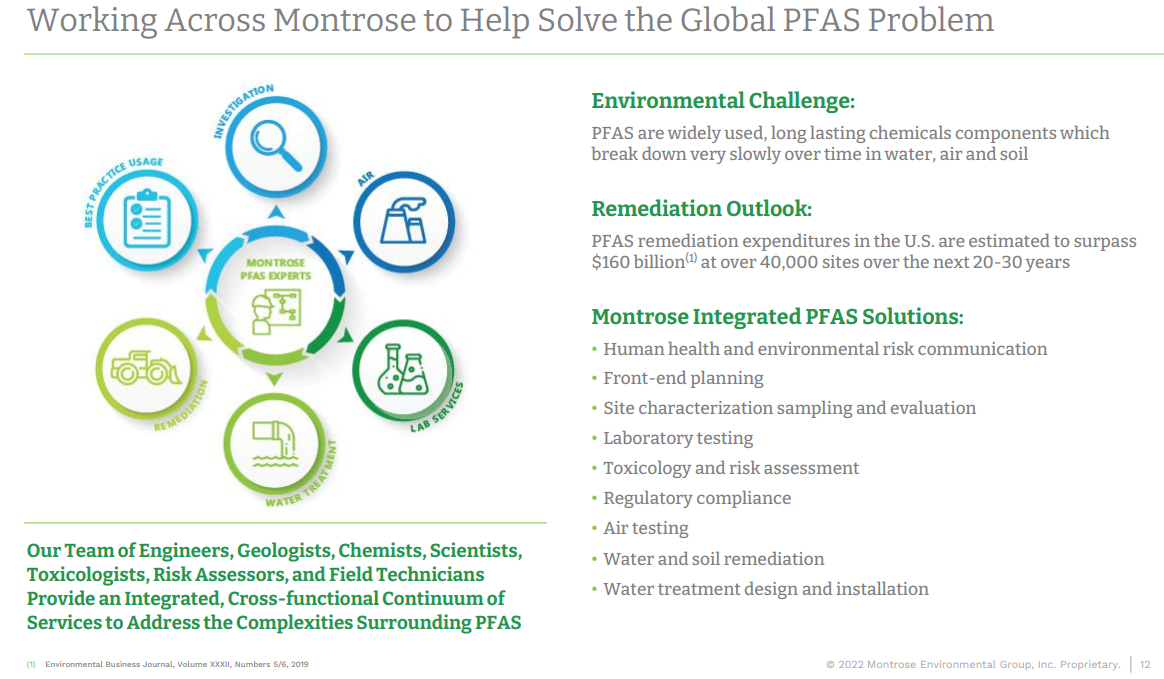The PFAS family of chemicals are known as “forever chemicals” because they do not break down in the environment and can accumulate in the bodies of animals and humans over time. There are thousands of different forms of PFAS, some of which have been more widely used and studied than others.
Firstly, let’s get the long form name out of the way! PFAS stands for per- and poly-fluoroalkyl substances and are man-made chemicals used in products that resist heat, oil, stains and water. The chemicals have been used around the world, as well as here in Australia, in many common household products and specialty applications since the 1940s because of their useful properties.
The trouble is that what made this family of chemicals (long-lasting with components that break down very slowly over time ie forever chemicals) so attractive in many end applications is now the reason they are now creating widespread health concerns around the world. This family of chemicals is certainly testing the old phrase that “nothing lasts forever”.
As you can see in the infographic below, PFAS is used in a wide variety of modern applications such as non-stick cookware, preventing food from sticking and making the clean up of pots and pans much easier, fire fighting foam which is commonly used at airports, military bases and petrochemical plants and water repellent applications (think 3M’s Scotchgard) including clothing, carpets and furniture, to name a few.

Source: Australian Government – Department of Defence.
Given its widespread use, PFAS is likely present in our water, soil and food with high levels of PFAS in drinking water creating some disturbing headlines in areas of high concentration (think landfills or near manufacturing sites). The Forever Chemicals — The Full Show | Great Lakes Now – YouTube provides a comprehensive overview of the issue and the side effects associated with consuming drinking water saturated with PFAS.
While the full extent of PFAS contamination is still being determined, it is likely that most people living in developed nations have some PFAS in their bodies. Given contamination is likely widespread, the cost of cleanup and restoring our soil and water assets to a safe condition can be very costly. Note that this does not include potential long-term healthcare or litigation costs and ongoing economic impacts associated with the environmental damage.
So what are the potential health effects of PFAS exposure? While research is still being conducted, the Environmental Protection Agency (EPA) in the US has released the following:
Current peer-reviewed scientific studies have shown that exposure to certain levels of PFAS may lead to:
- Reproductive effects such as decreased fertility or increased high blood pressure in pregnant women.
- Developmental effects or delays in children, including low birth weight, accelerated puberty, bone variations, or behavioural changes.
- Increased risk of some cancers, including prostate, kidney, and testicular cancers.
- Reduced ability of the body’s immune system to fight infections, including reduced vaccine response.
- Interference with the body’s natural hormones.
- Increased cholesterol levels and/or risk of obesity.
- Because children are still developing, they may be more sensitive to the harmful effects of chemicals such as PFAS
Our Current Understanding of the Human Health and Environmental Risks of PFAS | US EPA
Now the most important question: What are we doing about the problem?
On October 18, 2021, EPA Administrator Michael S. Regan announced the Agency’s PFAS Strategic Roadmap (PFAS Strategic Roadmap: EPA’s Commitments to Action 2021—2024 )—laying out a whole-of-agency approach to addressing PFAS.
The roadmap is basically underpinned by the three R’s:
- Research – increasing knowledge of exposure, toxicity levels and ecological effects
- Restrict – Proactively prevent PFAS from entering our environment
- Remediate – Broaden and accelerate the cleanup of PFAS contaminated sites
Fortunately, private enterprise is stepping up to the problem:
Montrose Environmental is a US-based environmental services company providing a diverse range of innovative solutions to help clients and communities meet their environmental needs and goals to address the world’s environmental challenges.
Clearly, PFAS is one of the most pressing issues right now for both public and private enterprises as regulations around reporting and remediation tighten at a time when the understanding of the family of forever chemicals is still being formed.

Source: Montrose Environmental.
Approximately 20% of Montrose’s revenue is currently being derived from its PFAS credentials – these include helping its clients understand the regulatory guidelines and risks, determining the size and scope of potential contamination and then providing patented solutions to remove the harmful chemicals from the site.
Management estimates that the size of the addressable market is large with >$160bn expected to be spent over the coming decades in alleviating the problem. Montrose provides a one-stop shop for supporting its clients, which is incredibly important in combining regulations with a response.

Source: Montrose Environmental.
Note that Montrose also operates here in Australia as it renewed a 5yr contract in 2021 with the Australian Department of Defence to operate and maintain water treatment systems at three of the country’s military bases. https://montrose-env.com/montrose-environmental-groups-ect2-subsidiary-announces-five-year-contract-renewal-with-australian-department-of-defence/.
In its last earnings conference call, Management highlighted the long-term bipartisan support in cleaning up the PFAS problem in the US:
In terms of selecting specific regulatory developments that will have or continue to have the potential to impact Montrose, in September 2022, the EPA proposed to designate PFOA and PFAS as hazardous substances under the Comprehensive Environmental Response Compensation and Liability or CERCLA Act https://www.epa.gov/laws-regulations/summary-comprehensive-environmental-response-compensation-and-liability-act.
This action will cause PFOA and PFAS to be eligible for cleanup under the recently refunded super fund program. This designation also triggers a requirement for companies to report any spills to the environment like when putting out a fire that could trigger additional contamination investigations as well as remedial actions.
Furthermore, the EPA recently announced the addition of certain PFAS chemicals to the toxic release inventory, which likely impacts current and future demand for consulting and advisory services in particular. Outside of direct actions by the EPA, we also saw additional momentum with PFAS regulations at the state level in the United States. And in October, a formal request for continued monitoring of PFAS from 49 members of Congress. We expect all these developments will continue to create tailwinds across our three segments.
Unfortunately, we will be hearing more about PFAS and its health consequences over the coming years. We are only now understanding and addressing the problem by enacting legislation to deal with it.
The forever chemical has been given a several decade head start on our environment, however, with government bodies now enacting legislation and companies such as Montrose providing the measurement and remediation capabilities, over the coming years we will look to undo the environmental damage incurred during the previous decades.
This blog was written by Bill Pridham, Ellerston Global Portfolio Manager.
Sources:
https://defence.gov.au/environment/pfas/pfas.asp
https://montrose-env.com/wp-content/uploads/2017/09/Montrose_ESG_083022.pdf
